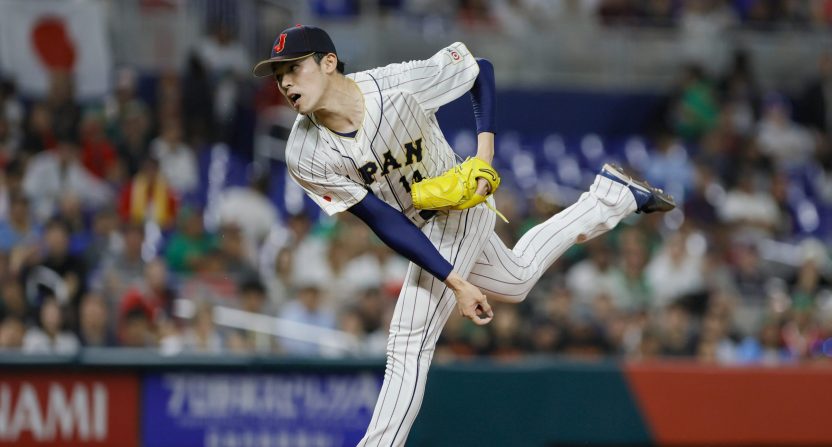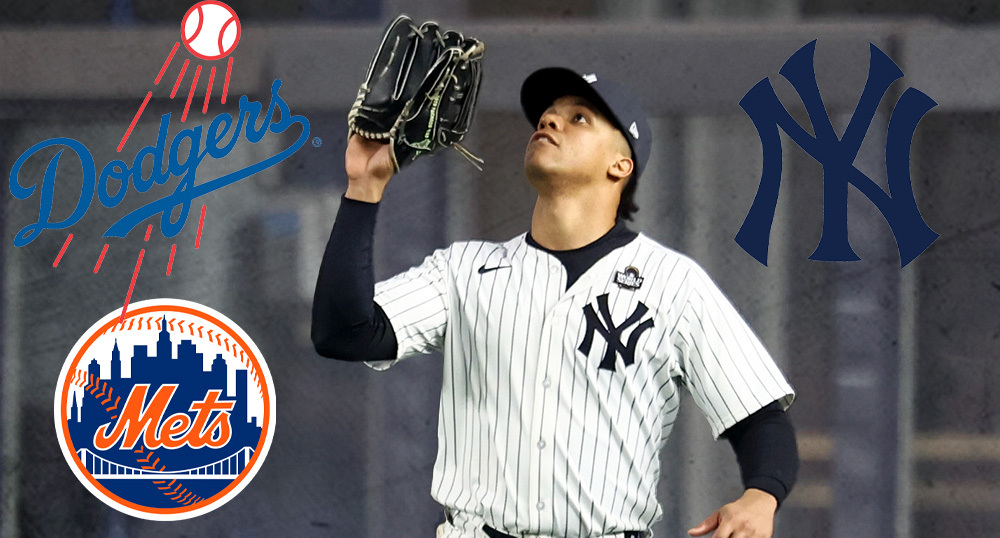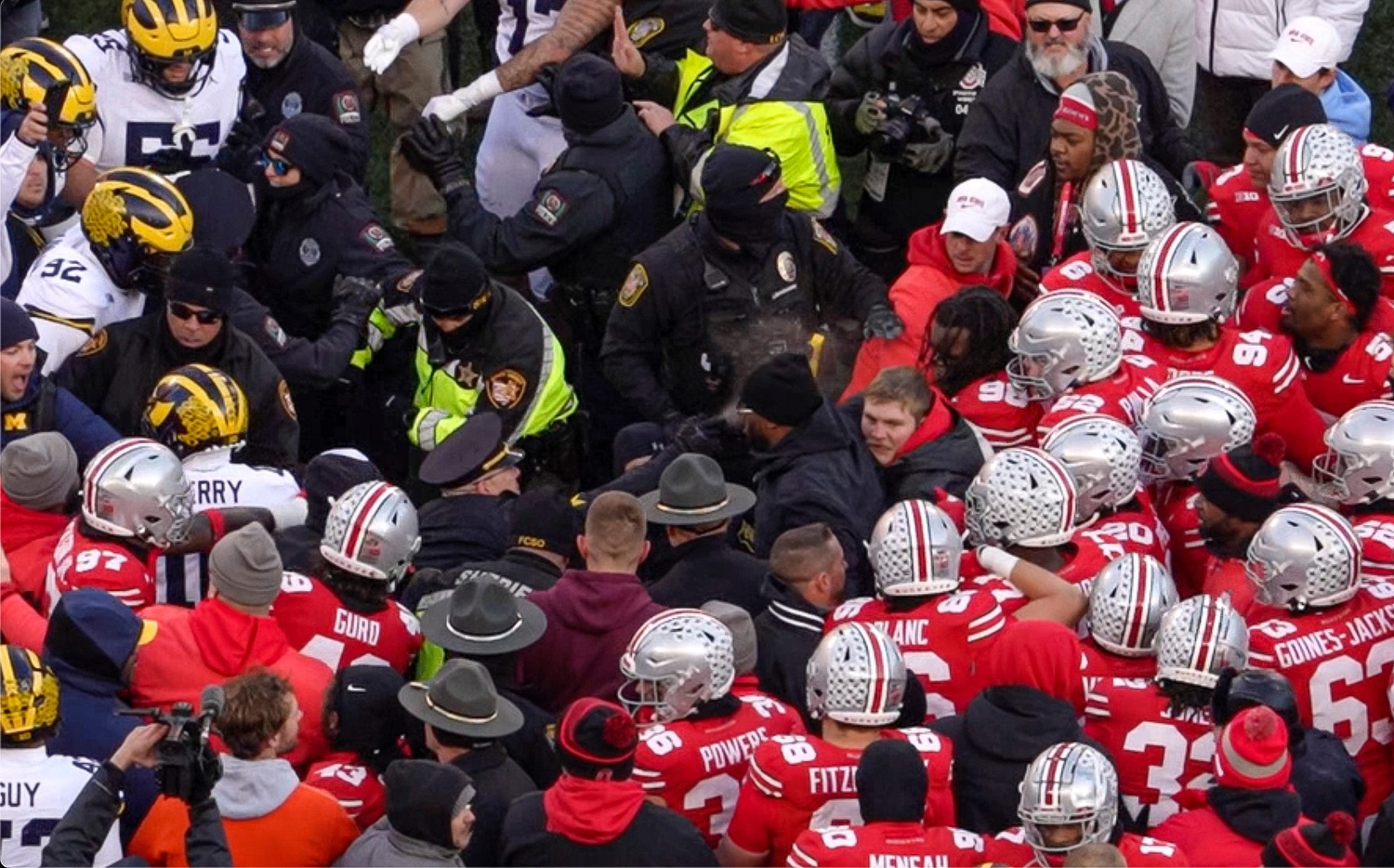Japanese ace pitcher Roki Sasaki is heading to Major League Baseball after it was recently announced that he would be posted by his current team, the Chiba Lotte Marines. He currently plays for Nippon Professional Baseball.
Let’s start with what this means for the 30 MLB teams.
When officially posted, all clubs have 45 days to negotiate with him. There’s a release fee the team that acquires him will have to pay, but that’s never been an issue.
What team that will be, remains to be seen, but it won’t necessarily be one with a hefty payroll. He looks to be one of the top free-agent pitchers on the. market this free agency with a 2.02 ERA in four seasons in Japan, but his scenario is different, as Jonathan Mayo explains for MLB.com:
At age 23, Sasaki is subject to international bonus pool money restrictions, as he’s under 25 and has less than six seasons of service time in a foreign league recognized by MLB. So we won’t be seeing a Yamamoto type of deal here (12 years, $325 million). This is similar to when Ohtani came here in 2017, when he received a bonus of $2.3 million from the Angels.
MLB insider Mark Feinsand reported the Los Angeles Dodgers and San Diego Padres are the top teams to land Sasaki, saying that’s the word among executives.
At 23, Sasaki has a very high ceiling, and when the world watched him in the World Baseball Classic two years ago, we knew there was something special. That money will increase over time.
The fastball velocity has Sasaki reaching triple digits, with maximum velo reaching 101.9 mph. He’ll throw around that speed frequently, as well. And that’s just part of it. The movement adds to the specialty— a combination of rise and run. While it’s a rare quality for a fastball, it’s even more so for a starter.
He also throws a splitter with an impressive amount of vertical break. It breaks down. DOWN.
Check out both of these pitches against MLB All-Star outfielder Randy Arozarena:
Roki Sasaki, 91mph Splitter & 101mph Fastball (home plate/offset view).
From: https://t.co/IoYQHm1ghK pic.twitter.com/gO4LDrAraV
— Rob Friedman (@PitchingNinja) March 29, 2023
Another angle:
Rōki Sasaki, 92mph Splitter and 102mph Fastball, Individual Pitches + Overlay pic.twitter.com/pSu8cvaW9n
— Rob Friedman (@PitchingNinja) November 5, 2024
More of a breakdown here:
Roki Sasaki #MLBFieldVision overlay
Fastball — 102 mph / 8 inches of drop
Splitter — 92 mph / 29 inches of drop pic.twitter.com/X1OfuiO4Na— David Adler (@_dadler) March 21, 2023
So we know the guy can pitch. He also adds the international element that the numbers prove valuable to the league.
When two-way superstar Shohei Ohtani began playing in the states, there was an instant success. In 2021 when he participated in the Home Run Derby, it was televised in Japan for the first time in 25 years. The first two games of the World Series drew a combined 29.7 million average viewers in the U.S. and Japan. Game 2 averaged 15.9 million viewers in Japan, the most-watched postseason game ever in the country.
Even before the World Series, during the National League Division Series, there was an international reach. When starters Yu Darvish and Yoshinobu Yamamoto battled one another for their respective Padres and Dodgers teams on Oct. 11, the do-or-die game “drew a 19.2 rating in the nation, equivalent to 12.9 million average viewers, and outperformed even the last three MLB games that were played in Tokyo,” according to the Japan Times.
Corbin Burnes, Blake Snell, and Max Fried are among the other top free-agent starting pitchers this winter. When it comes to these things, sometimes one signing creates a domino effect, but we’ve seen decisions made after spring training has started. Luckily, there’s a timeframe for Sasaki.






